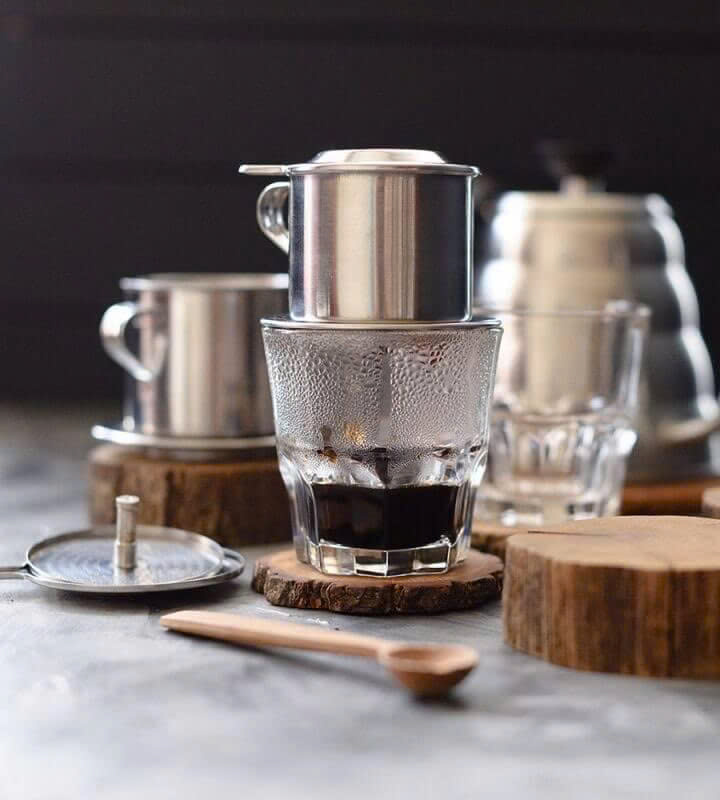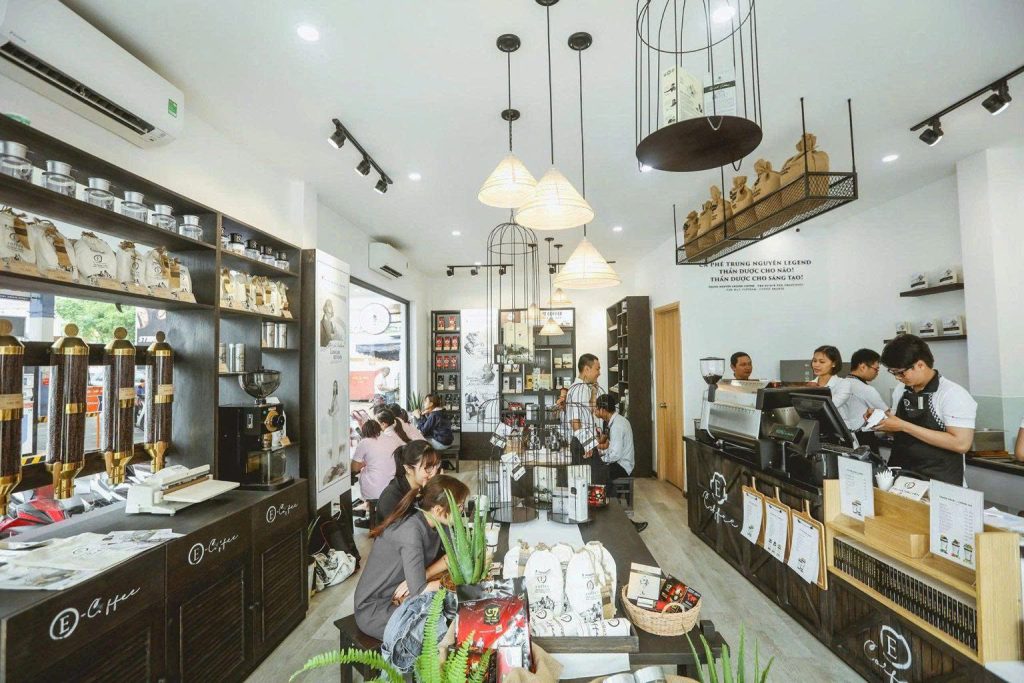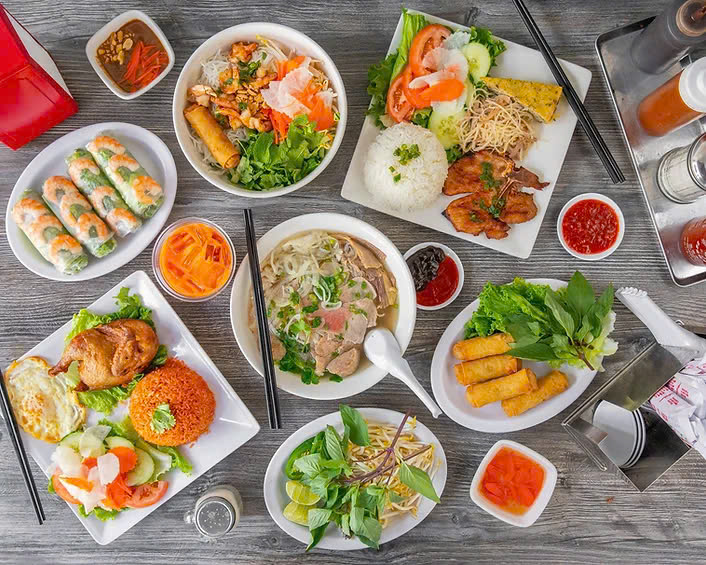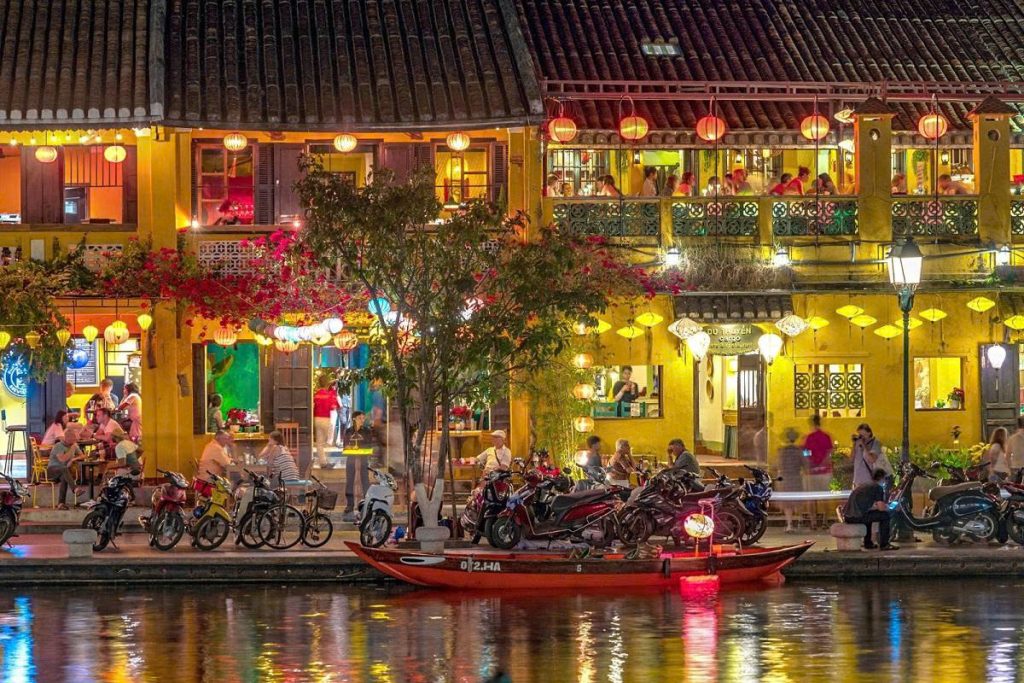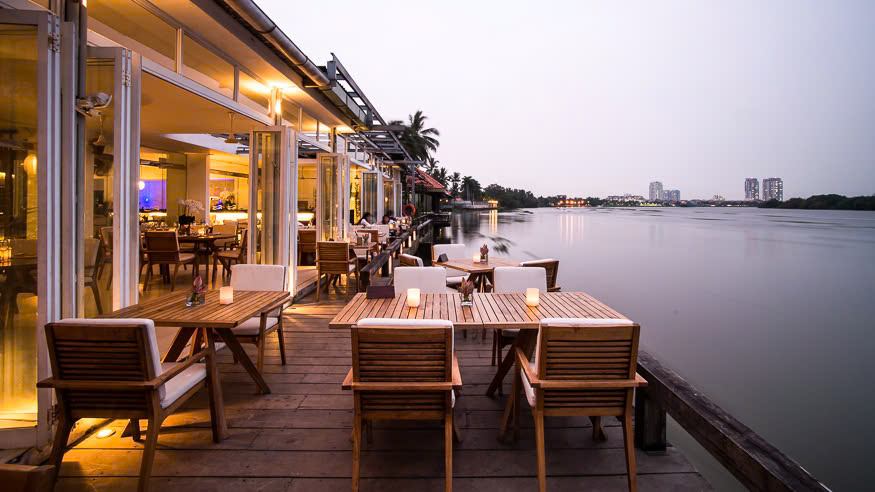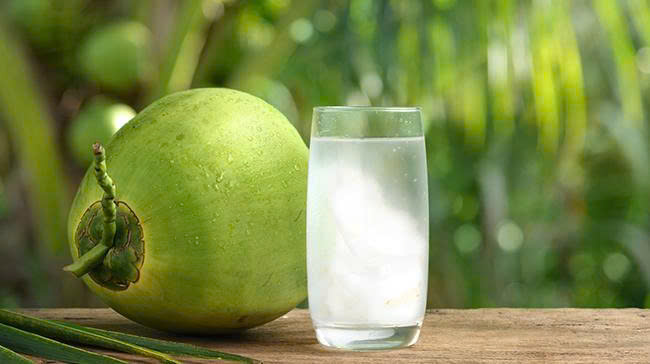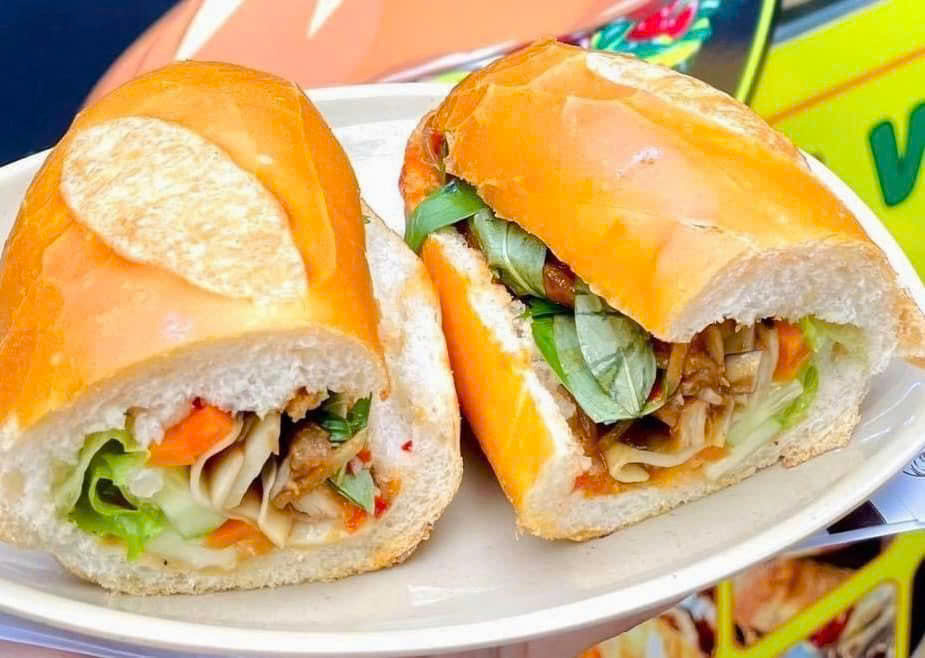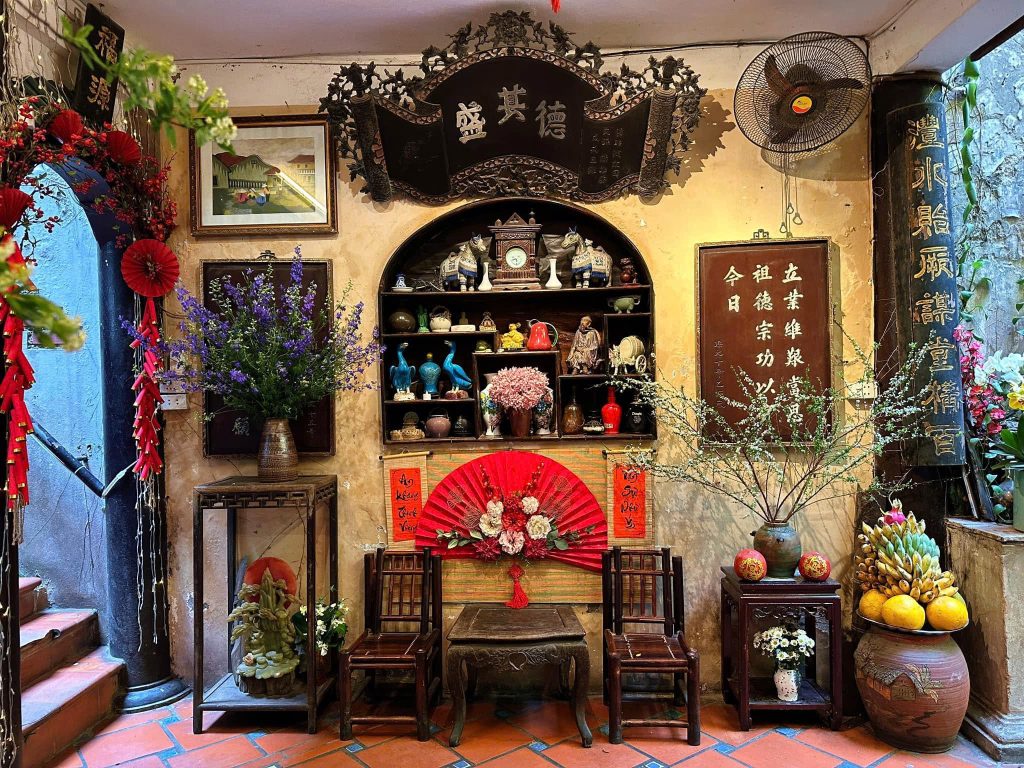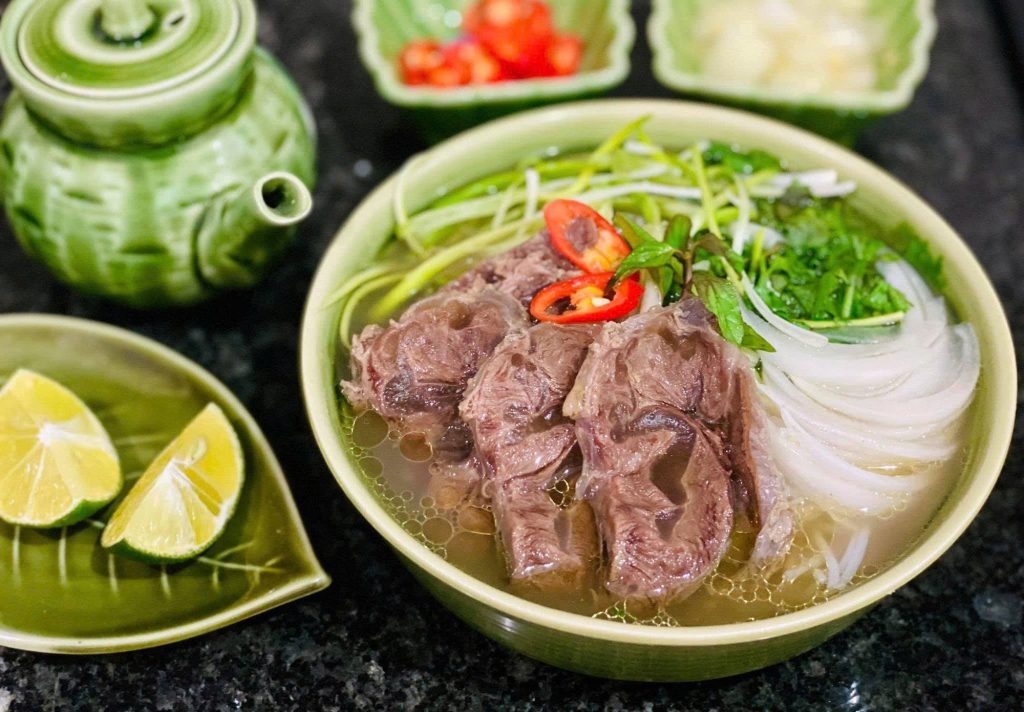The aroma of freshly brewed coffee, a comforting blend of rich earthiness and subtle sweetness, is an integral part of Vietnam’s identity. More than just a beverage, Vietnamese filter coffee, locally known as cà phê phin, is a cultural cornerstone, a daily ritual, and a delightful art form. This distinctive brewing method and the resulting robust flavor have captivated coffee lovers worldwide, making it a must-try for anyone seeking an authentic taste of Vietnam.
In this article, we’ll delve into the essence of Vietnamese filter coffee, exploring its history, the unique brewing process, popular variations, and how you can recreate this enchanting experience in your own home.
Vietnamese Filter A Cultural Icon
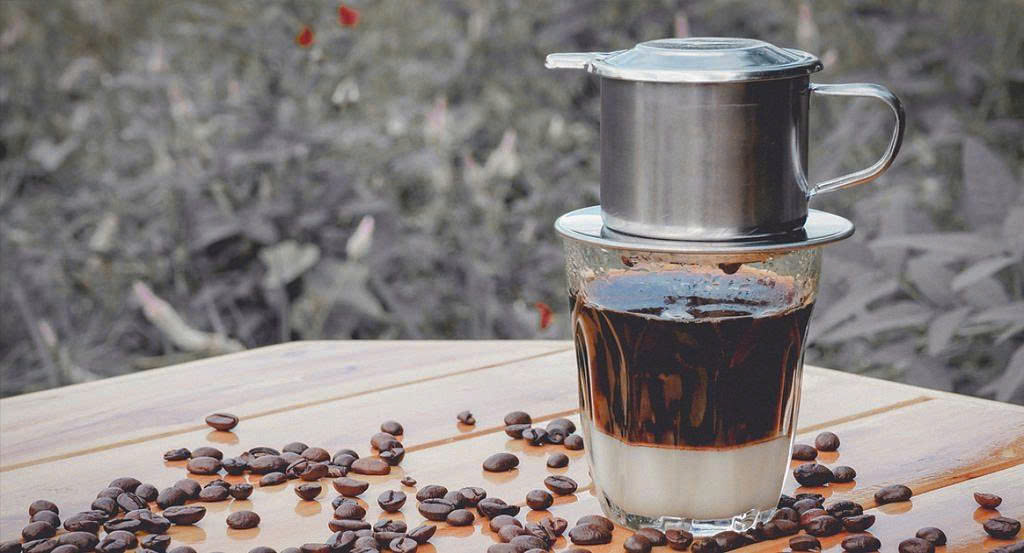
At its heart, Vietnamese filter coffee refers to coffee brewed using a phin filter (a small, gravity-drip coffee maker) and typically made with dark-roasted Robusta coffee beans, often blended with a touch of Arabica. The slow drip method allows for a concentrated, potent brew that forms the base for various iconic Vietnamese coffee drinks.
Key Characteristics:
- Distinctive Phin Filter: Its defining feature is the singular four-piece metal filter, commonly crafted from aluminum or stainless steel. It sits directly on top of a glass or cup, allowing coffee to slowly drip through.
- Robust Flavor Profile: Vietnamese coffee beans, especially Robusta, are known for their high caffeine content and bold, earthy, slightly bitter, and chocolatey notes.
- Slow Brewing Process: The slow drip extraction (typically 5-10 minutes) results in a highly concentrated, full-bodied coffee.
- Versatility: While often enjoyed with condensed milk (resulting in cà phê sữa đá), it’s equally delightful black (cà phê đen đá).
The History and Cultural Significance of Cà Phê Phin
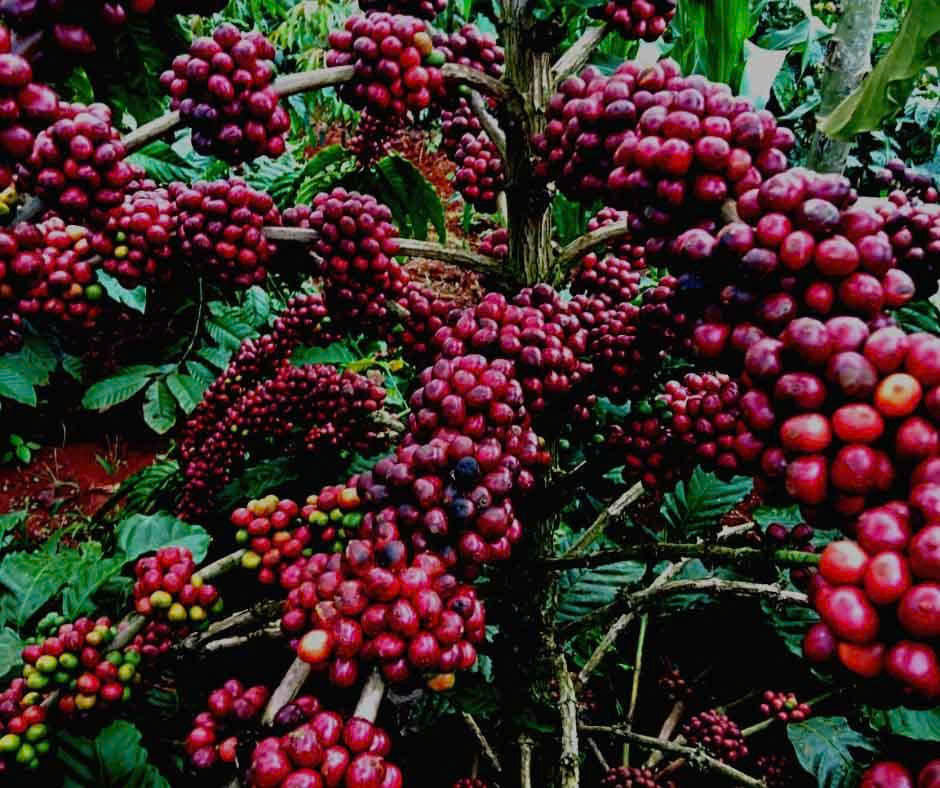
Vietnam’s coffee journey began in the late 19th century, introduced by the French. Initially, Arabica beans were cultivated, but the climate proved more suitable for Robusta. The ingenuity of the Vietnamese people led to the development of the phin filter, a simple yet effective tool that perfectly complemented the strong, dark-roasted beans.
The slow drip process became deeply ingrained in Vietnamese daily life. It’s not just about drinking coffee; it’s about the experience – the anticipation as each drop falls, the meditative quality of the waiting, and the ultimate reward of a rich, aromatic cup. From bustling street vendors to quiet cafes, the clinking sound of phin filters is a familiar symphony across the country. This tradition reflects the Vietnamese appreciation for patience, mindfulness, and savoring the moment.
The Elements of a Perfect Vietnamese Filter Coffee
To get that genuine flavor, you need to pay attention to a few crucial elements
The Coffee Beans: Soul of the Brew
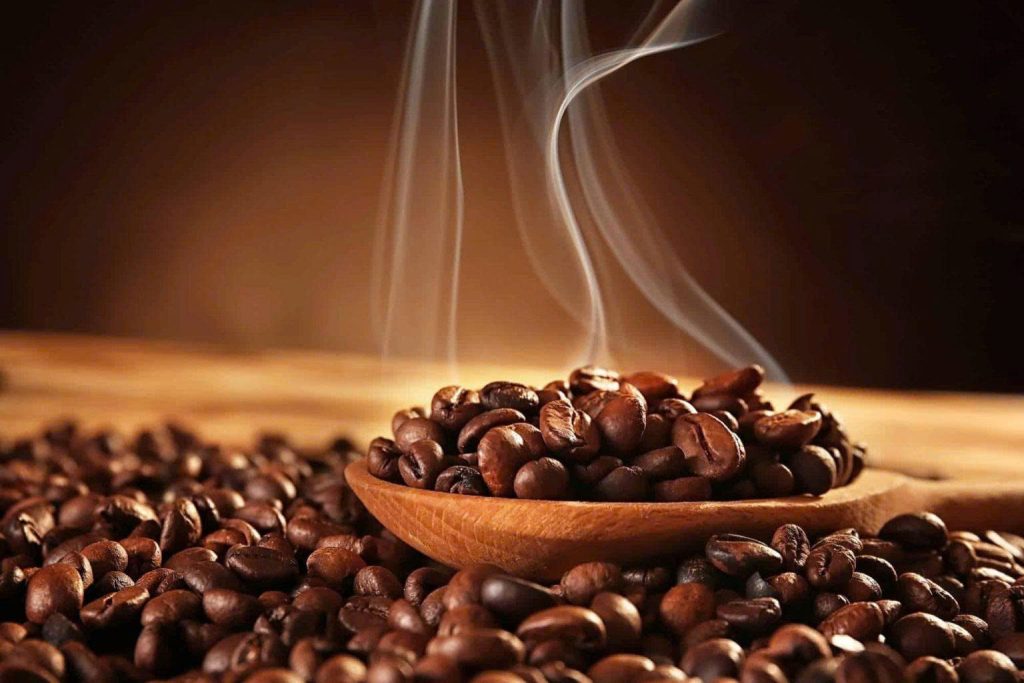
While Vietnamese coffee is often associated with Robusta, many high-quality blends incorporate Arabica for a more balanced profile.
- Robusta: Dominant in Vietnam, Robusta beans are known for their strong, bold flavor, high caffeine content, and creamy crema. Regions like Buôn Ma Thuột are famous for their Robusta production.
- Arabica: Offers more nuanced, aromatic, and less bitter notes. Đà Lạt and the Central Highlands produce excellent Arabica.
- Roast Level: Vietnamese filter coffee typically uses a dark roast, which enhances the bold flavors and contributes to the coffee’s signature intensity.
The Phin Filter: An Ingenious Device
The phin filter is both gracefully uncomplicated and wonderfully functional. It consists of four main parts:
- Perforated Plate: Sits on top of the cup.
- Brewing Chamber: Holds the ground coffee.
- Gravity Press/Tamper: A perforated disc that fits inside the chamber, used to gently press the coffee.
- Lid: Keeps the heat in during brewing.
Phins come in various sizes and are typically made from aluminum, stainless steel, or sometimes even ceramic. Stainless steel is often preferred for durability and heat retention.
Water Quality and Temperature
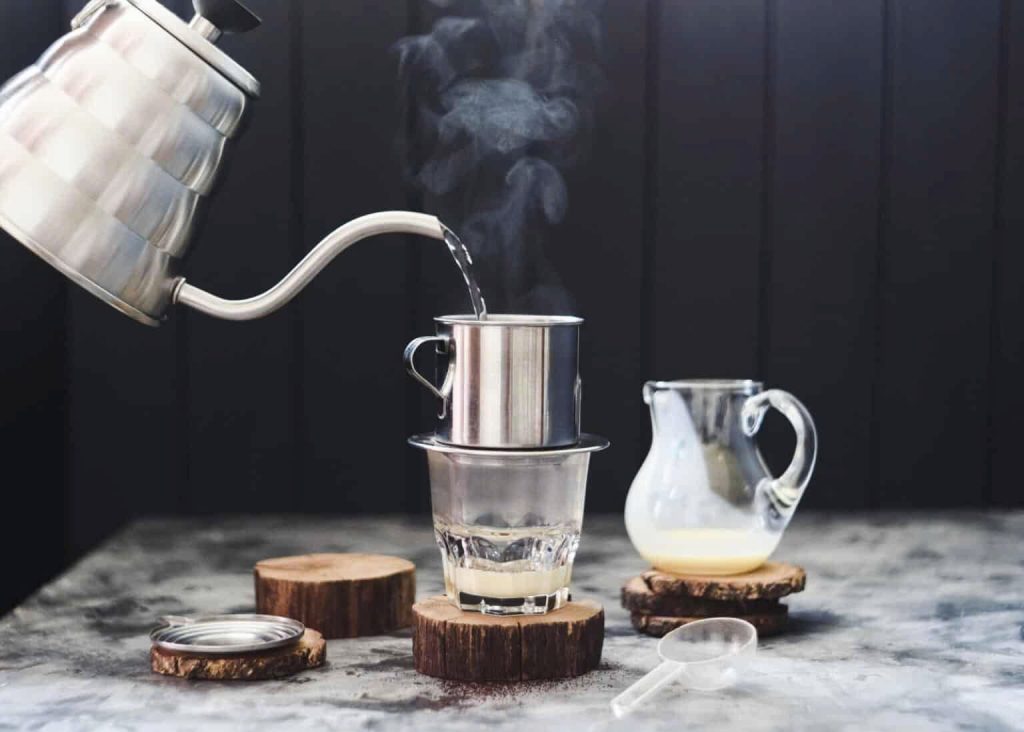
Water quality plays a big role in the coffee’s taste; filtered water is best to prevent off-flavors. For Vietnamese filter coffee, aim for water between 90-96°C (195-205°F). Water that’s too hot leads to bitterness, while water that’s too cool results in a weak coffee.
How to Brew Authentic Vietnamese Filter Coffee at Home
Learning to make cà phê phin is actually quite simple. Here’s a step-by-step guide:
What you’ll need:
- Vietnamese ground coffee: Use a medium to coarse grind, tailored for phin brewing.
- Phin filter set
- Glass or cup
- Hot water (90-96°C)
- Sweetened condensed milk (optional, but highly recommended for cà phê sữa đá)
The Brewing Process:
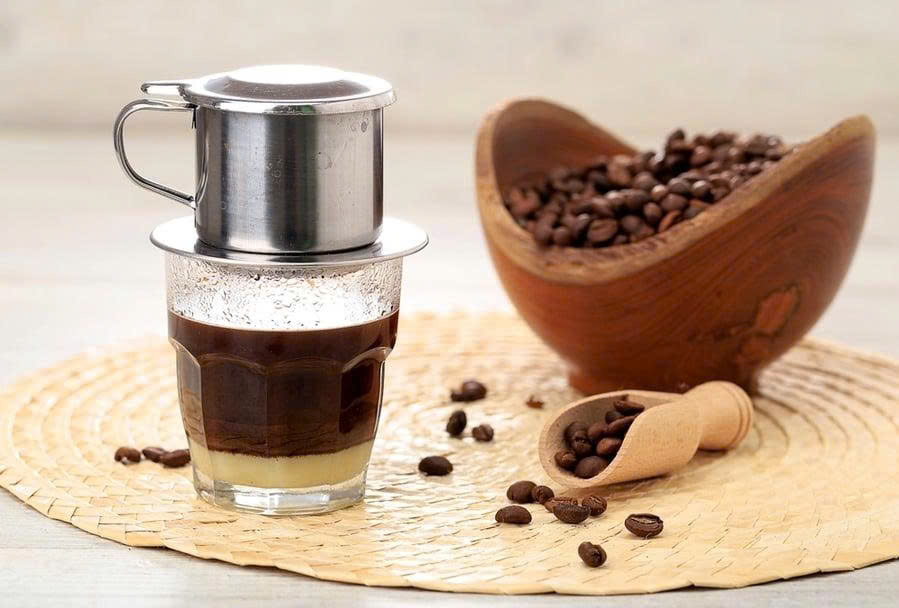
- Prepare Your Cup: If making cà phê sữa đá, add 2-3 tablespoons of sweetened condensed milk to your glass. If making black coffee, leave the cup empty.
- Warm the Phin: Put the perforated plate of the phin on top of your drinking cup. Pour a little hot water through the phin to warm it up. This helps maintain brewing temperature and ensures even extraction. Discard the water from the cup.
- Add Coffee: Add 2-3 tablespoons (about 20-25g) of ground coffee into the phin’s brewing chamber. Gently tap the phin to level the coffee grounds.
- Place the Gravity Press: Insert the gravity press (tamper) on top of the coffee grounds. Lightly but steadily press down to pack the coffee. Don’t press too hard, or the water won’t drip.
- Bloom the Coffee (Optional but Recommended): Pour about 20ml of hot water evenly over the compacted coffee. Wait for 20-30 seconds. This process, known as “blooming,” helps the coffee release gases and gets the grounds ready for better extraction.
- Full Pour: Slowly pour the remaining hot water (about 80-100ml, depending on desired strength) into the phin, filling it almost to the top.
- Wait and Watch: Place the lid on the phin and wait for the coffee to slowly drip into your cup. This usually takes 5-10 minutes. If it drips too fast, your grind might be too coarse or the tamper too loose. If it drips too slow, the grind might be too fine or the tamper too tight.
- Enjoy: Once all the coffee has dripped, remove the phin. Stir well with the condensed milk if using. You can include ice if you prefer cà phê sữa đá or cà phê đen đá.
Popular Vietnamese Filter Coffee Variations
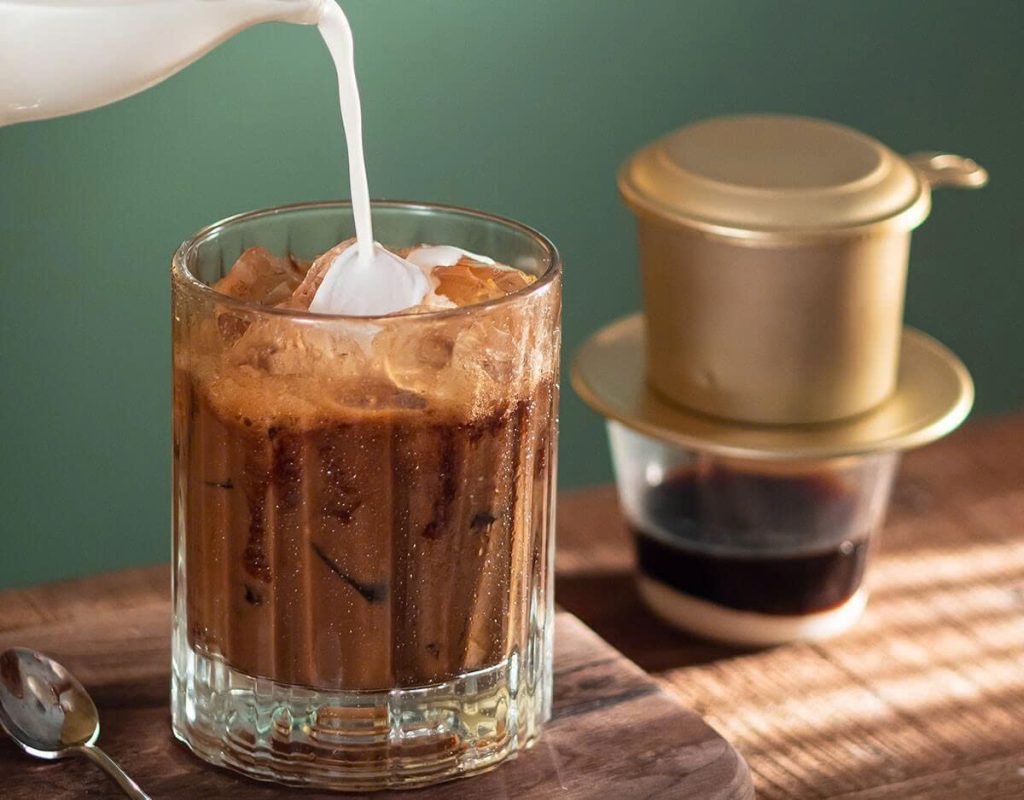
Beyond the classic cà phê sữa đá and cà phê đen đá, Vietnamese filter coffee serves as the base for several other delightful creations:
- Cà Phê Sữa Đá (Iced Coffee with Condensed Milk): The most famous variation. The robust coffee cuts through the sweetness of the condensed milk, creating a balanced and refreshing drink, especially on a hot day.
- Cà Phê Đen Đá (Iced Black Coffee): For those who prefer their coffee strong and unadulterated, often with a hint of sugar.
- Cà Phê Trứng (Egg Coffee): A specialty of Hanoi, featuring a rich, creamy, and slightly sweet egg yolk foam layered on top of hot black coffee. It’s a decadent, dessert-like experience.
- Cà Phê Cốt Dừa (Coconut Coffee): A refreshing blend of strong Vietnamese coffee with coconut milk and often shaved coconut ice, creating a tropical twist.
RELATED: 10 Best Coffee Shops in Hanoi: A Local’s Guide
Where to Buy Vietnamese Filter Coffee Products
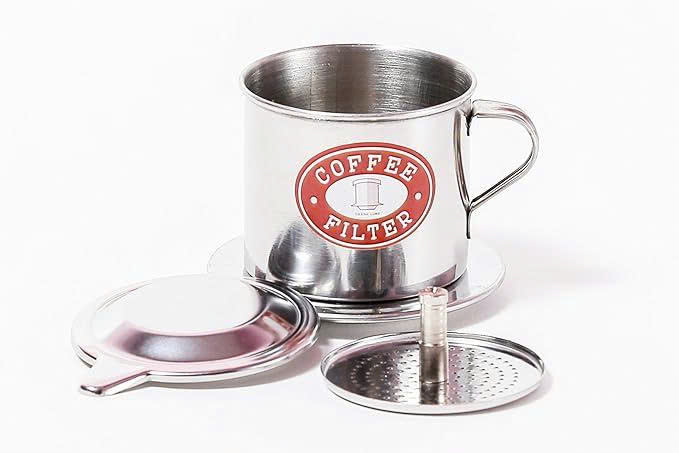
If you’re looking to recreate this experience, you’ll need the right tools and ingredients. Many reputable brands offer authentic Vietnamese coffee beans and phin filters:
- Coffee Brands: Look for well-known Vietnamese brands like Trung Nguyên Legend, King Coffee, or local roasters specializing in Vietnamese beans. These items can be purchased at Asian food markets, boutique coffee shops, or via internet sellers.
- Phin Filters: Available widely online (Amazon, Etsy, specialized coffee sites) and in Asian markets. Consider stainless steel for durability.
RELATED: The Best Cafes in Ho Chi Minh City: Saigon’s Coffee Guide
Vietnamese filter coffee is more than just a drink; it’s an invitation to slow down, appreciate the moment, and connect with a rich cultural heritage. Its bold flavors, unique brewing method, and delightful variations offer a captivating experience for any coffee enthusiast. Whether you’re enjoying a cà phê sữa đá on a bustling Saigon street or brewing a cup in your own kitchen, each drop tells a story of tradition, craftsmanship, and the enduring passion for coffee in Vietnam. Embrace the slow drip, savor the rich aroma, and discover the true soul of Vietnamese coffee.

